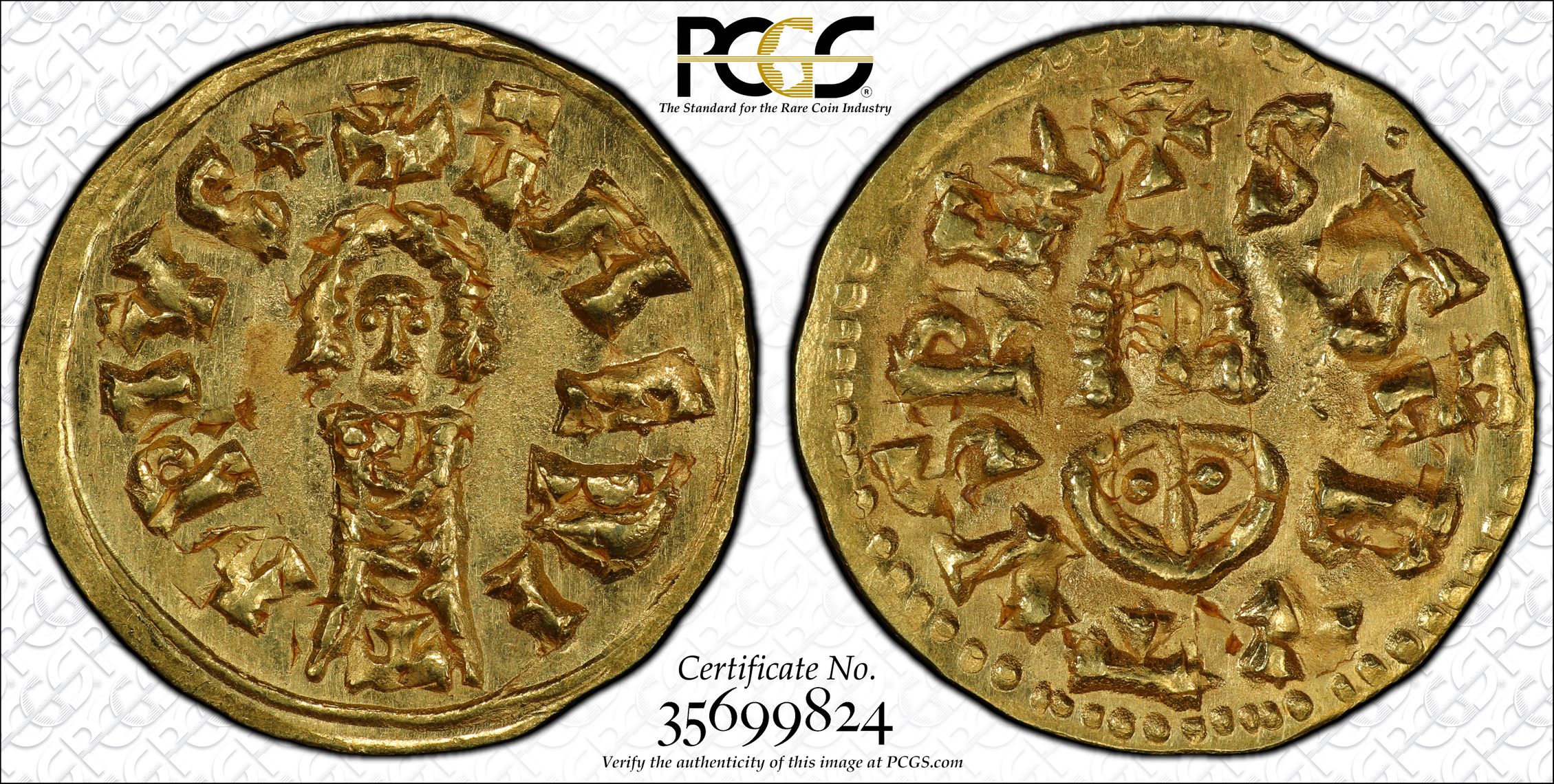Gold coins from around 1050AD had what kind of gold composition?
 Herb_T
Posts: 1,755 ✭✭✭✭✭
Herb_T
Posts: 1,755 ✭✭✭✭✭
Today gold coins can be a mixture of Gold and Copper or can be 99.99% pure, 24 kt. What was the mixture if any over 1000 years ago?
0
Comments
Gold mined from the earth usually seems to occur in the range of 85-97% purity. They could mint gold of similar purity without much refining of any kind.
IG: DeCourcyCoinsEbay: neilrobertson
"Numismatic categorizations, if left unconstrained, will increase spontaneously over time." -me
I submitted without PCGS numbers....maybe after they get them PCGS will create numbers.
???
In honor of the memory of Cpl. Michael E. Thompson
PCGS doesn’t grade coins that old, most likely they will be returned ungraded.
Here's a PCGS graded Visigoth Tremisses from just after 600 AD, so they do grade coins that old. Not sure what criteria they use for grading vs not grading.

My World Coin Type Set
Depends on where the coins are from. Gold coins from western Europe are super-rare, almost unheard of. Likewise gold coins from China. But the tiny number that do occur, are usually quite high fineness.
The Byzantine Empire was a prolific issuer of gold coins, and the stamenon numisma was of quite high fineness in AD 1050. Both the quantity and the fineness fell quite suddenly after the Byzantine defeat in the Battle of Manzikert in 1071.
In the Islamic sphere, the gold dinar of the Fatimids (the Shiite rulers of Egypt) is quite common, the gold dinars of the Ayyubid Caliphate in Baghdad somewhat less common. Both of these gold dinars are of quite high fineness, retaining the standard of the old Byzantine solidus they were originally copied from.
The list of coins that PCGS are prepared to grade can be found on their FAQ page:
So they do not routinely grade coins older than AD 1600 - basically, if it's not in Krause, they don't touch it. The Visigoth coin posted above is an anomaly; I can only assume someone got i graded as part of some special deal.
Roman emperor Marcus Aurelius, "Meditations"
Apparently I have been awarded the DPOTD twice.
Sorry guys, that comment was meant for my other thread on Vienna Philharmonic coins…my bad.
They do routinely grade older coins, they have tons of medieval types graded. That limit of 1600 AD isn’t accurate.
Gobrecht's Engraved Mature Head Large Cent Model
https://www.instagram.com/rexrarities/?hl=en